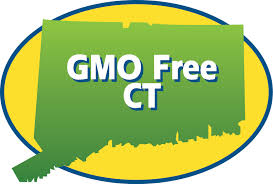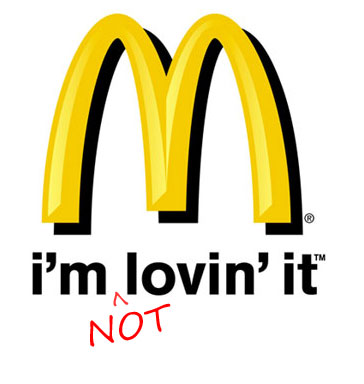
BLOG
Posted on Tuesday, June 11th, 2013 by Michele Simon


It seems hardly a week goes by without another foodborne illness outbreak. This time, in frozen organic berries, proving once again that even the health-conscious are not immune from getting sick. Although you wouldn’t know it from the packaging, the contaminated fruit came from overseas, raising several questions such as: Can we trust the USDA organic seal on imported food? I address this and other issues about our globalized food system in my latest article for Center for Food Safety, which you can read on their site here.
Posted in Food Policy, Food Safety, Public Health | Tagged: FDA, food safety, organic, outbreak, USDA | Michele on Google+ | View/Add Comments (0)
Posted on Tuesday, June 4th, 2013 by Michele Simon
Connecticut Makes History as First State to Pass GE Food Labeling Law

This week, Connecticut won the honor of becoming the first state to pass a law requiring genetically-engineered foods to be labeled. (The governor has indicated he will sign.) It was really only a matter of time. The disappointing defeat of Prop 37 last fall in California (thanks to a massive industry disinformation campaign) sparked a national movement that has resulted in labeling bills getting introduced in about half the states.
But how did the small state of Connecticut make this happen?
Continue reading →
Posted in Big Food, Food Policy, Food Safety | Tagged: agriculture policy, California Prop 37, food safety, GMO labeling, GMOs, Monsanto | Michele on Google+ | View/Add Comments (10)
Posted on Wednesday, May 29th, 2013 by Michele Simon

Last week at McDonald’s annual shareholder’s meeting, CEO Don Thompson got caught off-guard when a team of 15 advocates, led by Corporate Accountability International, descended upon corporate headquarters to question the fast food leader’s relentless exploitation of children and communities of color.
Read rest at Corporate Accountability International ….
Posted in Big Food, Child Nutrition, Industry Tactics, Marketing to Children | Tagged: child nutrition, childhood obesity, fast food, junk food, McDonald's, nutrition labeling, targeted marketing | Michele on Google+ | View/Add Comments (2)
Posted on Thursday, May 23rd, 2013 by Michele Simon

In March, when I first wrote about how the biotech rider—called the Monsanto Protection Act by its vocal opponents—undercut the constitutional concept of separation of powers, it seemed hardly anyone (other than the usual advocacy groups) was paying attention. But then a lot of people got mad, really mad.
Within a few short weeks the issue exploded in the mainstream media, with the surest sign the issue had hit the big time being (what else?) coverage by The Daily Show (hilariously entitled, “You Stuck What Where?”). Another indication was outrage even from a Tea Party blogger.
Continue reading →
Posted in Big Food, Food Policy, Food Safety, Industry Tactics | Tagged: agriculture policy, Big Food, Congress, farm bill, FDA, food safety, GMO labeling, GMOs, lobbying, Obama, USDA | Michele on Google+ | View/Add Comments (17)
Posted on Tuesday, May 14th, 2013 by Michele Simon

Last month, the International Food Information Council Foundation released the third edition of its report: Food Biotechnology: A Communicator’s Guide to Improving Understanding. What sounds like a reasonable and helpful document is in fact the product of a well-oiled PR machine whose board of trustees includes executives from such food giants such as Coca-Cola, Kraft Foods, and Mars. In response to such tactics, I have authored a new report for Center for Food Safety that exposes the well-funded organizations and highly-sophisticated public relations strategies increasingly deployed to defend the food industry. Read rest at Center for Food Safety…
Posted in Big Food, Food Policy, Industry Tactics, Public Health | Tagged: Coca-Cola, front groups, Kraft, lobbying, Nestle, public relations | Michele on Google+ | View/Add Comments (1)
Posted on Monday, May 6th, 2013 by Michele Simon
Last week, Monster Beverage filed an unusual lawsuit against the San Francisco City Attorney’s office to stop an attempt to place restrictions on the company’s highly caffeinated and potentially harmful products aimed at youth. This aggressive move is a form of backlash against using the legal system to hold the food and beverage industry’s accountable for deceptive marketing practices.
Continue reading →
Posted in Big Food, Child Nutrition, Industry Tactics, Marketing to Children | Tagged: advertising regulation, child nutrition, Chobani, Coca-Cola, ConAgra, deceptive health claims, FDA, Frito-Lay, General Mills, GMOs, Happy Meals, law, litigation, natural, PepsiCo, targeted marketing, vitaminwater, Whole Foods | Michele on Google+ | View/Add Comments (14)
Posted on Monday, May 6th, 2013 by Michele Simon

By Michele Simon and John Stewart
This week, when tobacco giant Philip Morris International hosts it annual shareholders’ meeting in New York, the company will honor outgoing CEO Louis Camilleri for his years of service. But a look back at Camilleri’s tenure shows a trail and death and destruction unworthy of celebration.
In 2008, parent company Altria Group spun off the international division of Philip Morris to focus more on “emerging markets,” the euphemism corporations use to describe the exploitation of Global South nations. For decades, as the regulatory environment and public sentiment has turned against smoking in the U.S., tobacco corporations have set their sights overseas. As a result, Philip Morris International now derives more revenue from Asia than from the European Union, and nearly 80 percent of tobacco-related deaths occur in the Global South.
Continue reading →
Posted in Industry Tactics, Public Health | Tagged: Corporate Accountability International, law, tobacco | Michele on Google+ | View/Add Comments (0)
Posted on Friday, April 19th, 2013 by Michele Simon
Many food advocates mistakenly believe that we just need to follow in the footsteps of the tobacco control movement and then we will win. It’s certainly true impressive gains have been made in reducing smoking rates in the United States. And the World Health Organization’s global tobacco treaty has tremendous potential to save lives around the world. Nevertheless, the public health crisis caused by tobacco remains quite serious.
Continue reading →
Posted in Industry Tactics, Public Health | Tagged: co-opting science, Corporate Accountability International, FDA, targeted marketing, tobacco | Michele on Google+ | View/Add Comments (1)
Posted on Thursday, April 11th, 2013 by Michele Simon
Come see me present my new talk, Force Fed: Deconstructing Food Industry Lies, next Wednesday, 4pm, at the University of California, Wheeler Auditorium. For more details about the course, which features weekly lectures by guest speakers, see this article in the Daily Californian. Admission is free.
Posted in Big Food, Industry Tactics, Public Health | | Michele on Google+ | View/Add Comments (0)
Posted on Monday, April 8th, 2013 by Michele Simon

With the passage of the Healthy, Hungry-Free Kids Act of 2010, in addition to improving school meals, Congress required the U.S. Department of Agriculture to update nearly non-existent nutrition standards on so-called competitive foods. These are foods sold outside the school meal program, including fast food items sold alongside the reimbursable lunches, and soft drinks and junk food sold in vending machines, school stores, fundraisers, and the like.
Continue reading →
Posted in Big Food, Child Nutrition, Food Policy, Marketing to Children | Tagged: Center for Food Safety, school food policy, targeted marketing | Michele on Google+ | View/Add Comments (8)




















